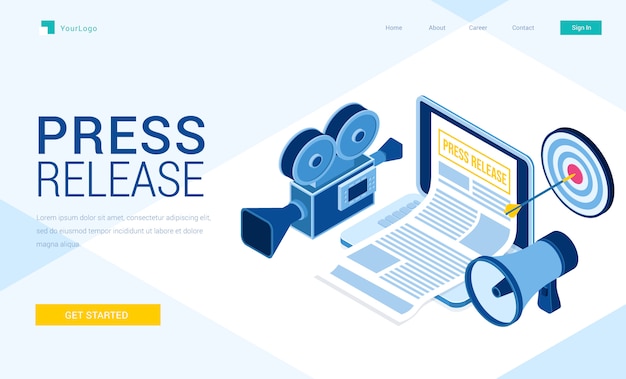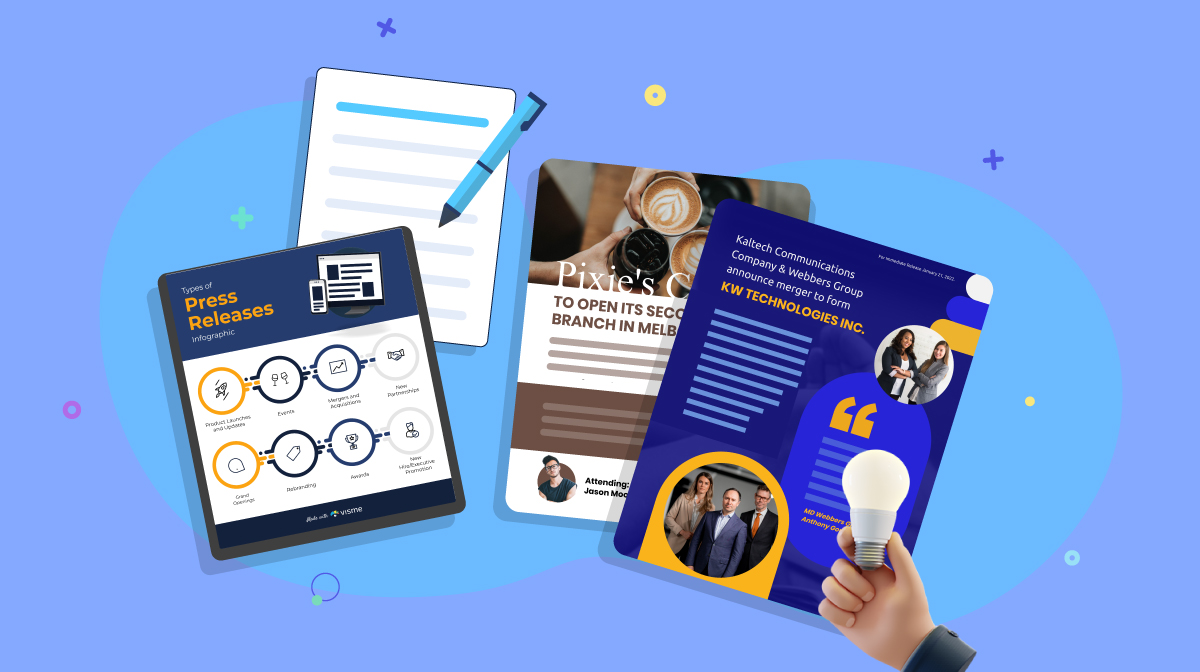

In today's fast-paced media landscape, crafting an effective press release is both an art and a science. As professionals, we understand the importance of delivering impactful messages to our target audience.
But how can we ensure that our press releases not only capture attention but also drive desired results? The answer lies in the meticulous understanding of our audience, the careful selection of attention-grabbing headlines, the incorporation of persuasive language, and the structuring of our press releases in a way that maximizes their impact.
But that's not all – we must also include relevant and newsworthy information, while optimizing our press releases for search engines. So, whether you're a seasoned PR expert or just starting out, join me on this journey as we explore the science behind writing effective press releases.
Understanding the target audience is crucial for crafting effective press releases. A press release is a tool used by organizations to communicate with the media and the public about an important event or announcement.
To ensure that the press release resonates with its intended audience, it is essential to have a deep understanding of who they are, what they care about, and how they consume information. This understanding allows the writer to tailor the language, tone, and content of the press release to meet the needs and interests of the target audience.
By speaking directly to their concerns and interests, the press release is more likely to capture their attention, generate media coverage, and ultimately achieve the desired outcomes. Without this understanding, the press release may miss the mark and fail to engage the intended audience.
Crafting attention-grabbing headlines is essential for capturing the interest of the target audience and maximizing the impact of a press release. The headline serves as the first point of contact between the reader and the press release, making it crucial to create a strong and compelling headline that grabs attention and entices the reader to continue reading.
To craft an attention-grabbing headline, it is important to focus on clarity, conciseness, and precision. The headline should clearly convey the main message or news angle of the press release in a concise and impactful manner.
It should also be precise and specific, avoiding vague or generic language. By carefully crafting attention-grabbing headlines, press releases can effectively engage the target audience and increase the chances of media coverage and publicity.

To truly captivate readers and compel them to take action, press releases must skillfully incorporate persuasive language that resonates with their target audience. The use of persuasive language is essential in capturing the attention of readers and influencing their perception of the information being presented.
By utilizing powerful and engaging words, press releases can effectively communicate key messages and create a sense of urgency or excitement. It is important to understand the needs and interests of the target audience to tailor the language accordingly. This involves using emotive language, strong verbs, and compelling storytelling techniques.
Additionally, incorporating evidence and statistics can strengthen the persuasive impact of the press release. By carefully crafting the language to appeal to the audience's emotions and logic, press releases can effectively persuade readers to take the desired action.
An effective press release is structured in a way that maximizes readability and clarity. To achieve this, it is important to follow a specific structure. The headline should be attention-grabbing and concise, summarizing the main point of the release.
The first paragraph, often known as the lead, should provide the most important information, answering the who, what, when, where, why, and how questions. The subsequent paragraphs should provide additional details, supporting facts, and quotes from relevant sources. Each paragraph should focus on one main idea and flow logically from one to the next.
Finally, the press release should conclude with a boilerplate, which provides background information about the company or organization. By structuring a press release effectively, readers can quickly grasp the key information and understand the purpose of the release.

Including pertinent and newsworthy details is crucial for crafting a compelling press release. When writing a press release, it is important to provide information that is relevant to the target audience and that grabs their attention.
The inclusion of facts, figures, statistics, and quotes from credible sources can add credibility and make the release more newsworthy. Including details such as the who, what, when, where, why, and how can help journalists and readers understand the significance of the story.
Additionally, incorporating a compelling headline and a strong opening paragraph can grab the reader's attention and entice them to continue reading. By including relevant and newsworthy information, a press release has a better chance of gaining media coverage and reaching its intended audience.
Press releases can be optimized for search engines to increase their visibility and reach a wider online audience. By incorporating relevant keywords and phrases throughout the press release, it becomes easier for search engines to index and rank the content.
This optimization process involves conducting keyword research to identify the terms that are most likely to be used by users searching for related information. Additionally, including links to the company's website or other relevant sources can improve search engine optimization (SEO).
It is important to strike a balance between incorporating keywords and maintaining the press release's readability and authenticity. By optimizing press releases for search engines, businesses can enhance their online presence and attract a larger audience, ultimately increasing their chances of media coverage and brand exposure.

To maximize media coverage through press releases beyond traditional outlets, businesses can adopt a multifaceted approach. Firstly, they can optimize their press releases for search engines by including relevant keywords and metadata. Additionally, businesses can leverage social media platforms to share press releases with their followers and engage with a wider audience. Furthermore, collaborating with influencers or industry experts can help generate additional media coverage and increase the reach of the press release. Finally, businesses should consider incorporating multimedia elements, such as videos or infographics, to make their press releases more engaging and shareable.
To measure the success of your press release in reaching your target audience, you can employ various metrics. Start by analyzing the media coverage and mentions your press release receives. Additionally, monitor website traffic and engagement levels, such as click-through rates and time spent on your press release landing page. Social media shares, comments, and engagement are also valuable indicators. Finally, conducting surveys or interviews with your target audience can provide direct feedback on the reach and impact of your press release.
It is necessary to use persuasive language in a press release in order to effectively communicate with the target audience and generate interest. While presenting facts is important, using persuasive language can help create a sense of urgency, emphasize key points, and encourage action. Persuasive language can include strong adjectives, compelling statements, and clear calls to action. By incorporating persuasive elements into press releases, organizations can increase the likelihood of their message being noticed and acted upon by the intended audience.